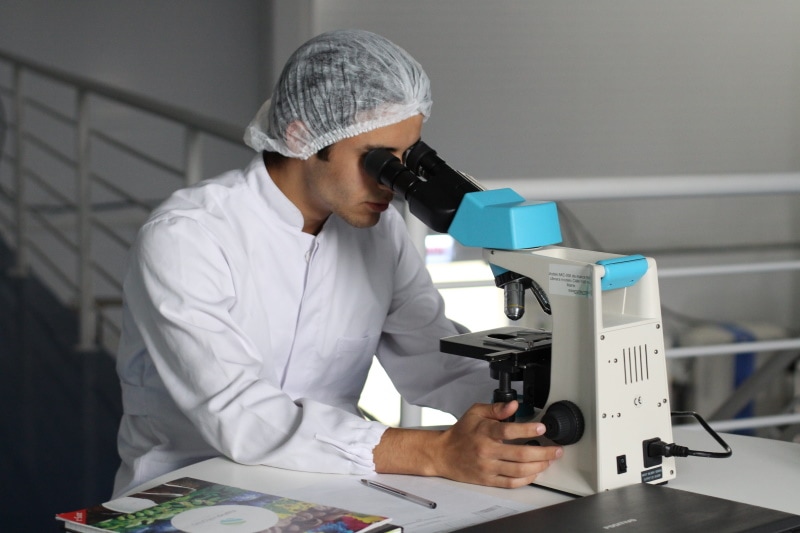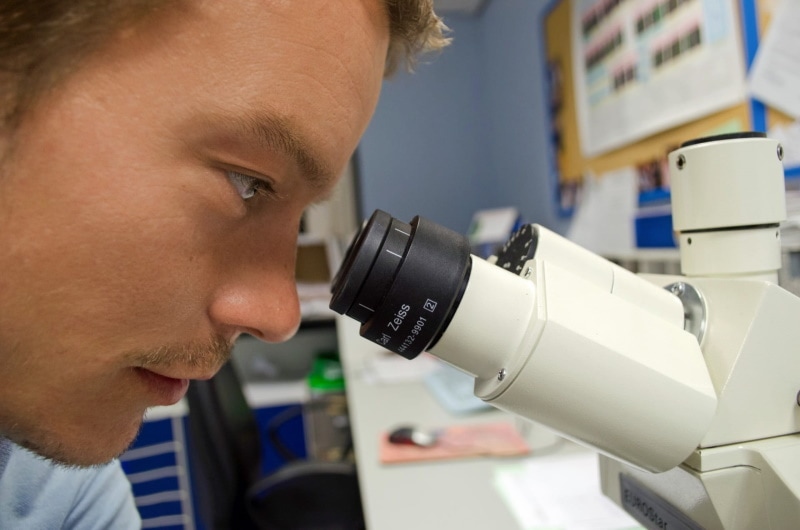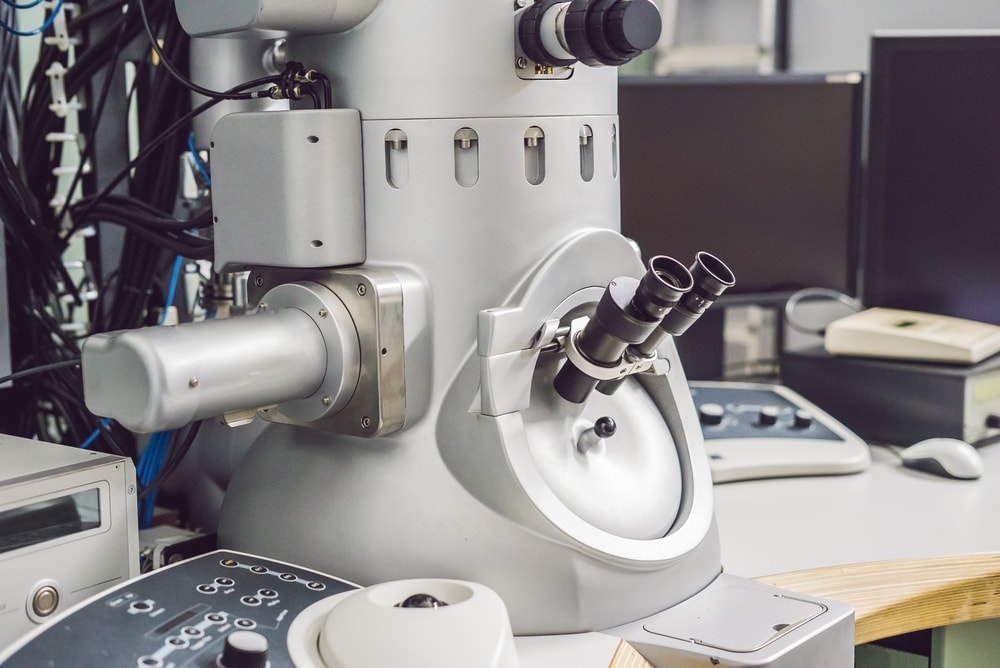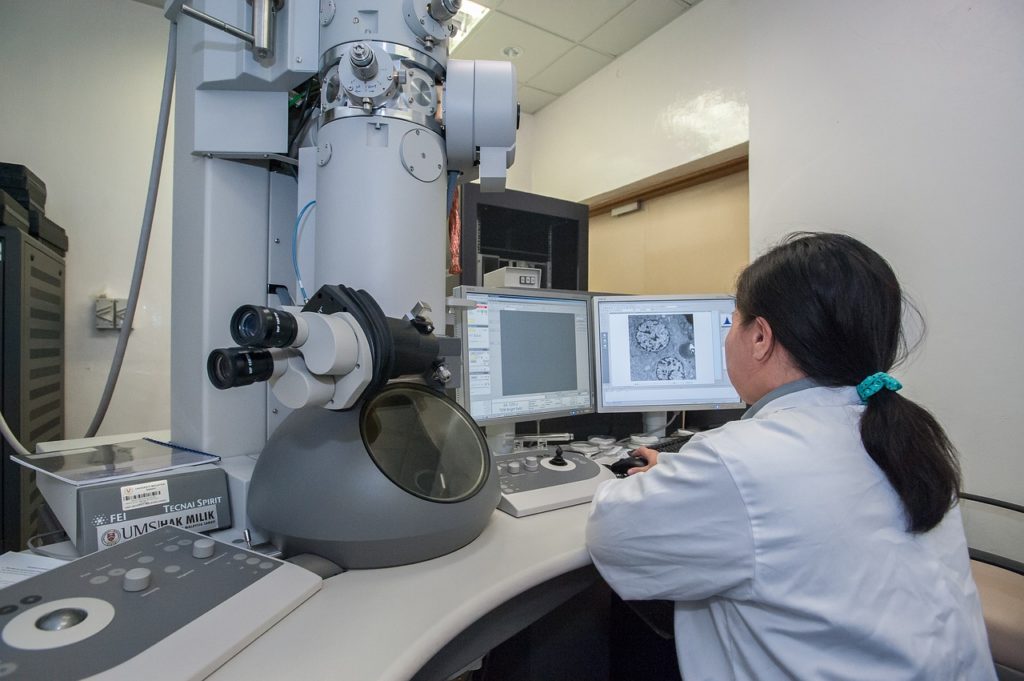What Does an Atom Look Like Under a Microscope? Facts & FAQ
Last Updated on

Atoms make up everything in this world, so wondering about how it looks isn’t an uncommon or surprising question. Since it’s a microscopic particle, it’s impossible to see an atom from the naked eye.
Scientists have spent centuries researching the atom, and it wasn’t too long ago that they started using powerful microscopes to view them up close. With the help of an electron microscope, they found that an atom appears as two connected spheres.
If you’re wondering what an atom looks like under a microscope, keep reading. Here’s everything you need to learn about atoms and the differing opinions about their appearance.

What Are Atoms?
Scientists consider atoms the main building blocks in this universe, making up every single organism on the planet. When John Dalton first discovered atoms, the idea that they were simply small balls was prevalent. However, the definitions of this invisible particle have changed.
Electrons, protons, and neutrons make up a single atom. However, you’ll be surprised that these elements consist of smaller particles called quarks. Atoms can exist independently or codependently, but they’re always part of any chemical reaction, which occurs when atoms from different elements interact.
It’s worth noting that atoms cannot be created or destroyed after they formed 13.7 billion years ago¹ in the Big Bang, when quarks had formed into neutrons and protons. Approximately 380 thousand years after the Big Bang, the universe cooled enough for nuclei to capture electrons and form atoms.
The word “atom” is derived from the Greek word “atomos,” meaning invisible. In the 5th century BCE, Democritus was the first to propose that combining different atoms caused all matter. Boyle, Newton, Galileo, and Lavoisier further discussed the atom.

What Are Atomic Models?
Many scientists and philosophers have proposed various atomic models indicating an atom’s appearance. That includes Dalton’s Billiard Ball model, Rutherford’s planetary model, J.J Thomson’s “plum pudding” model, and Bohr’s atomic model. Unfortunately, each atomic model has its demerits and flaws due to the lack of technology at its introduction.
Dalton’s Billiard Ball Model
John Dalton’s atomic model was introduced in 1803¹, stating that these atoms were indestructible, unchangeable, and invisible building blocks for all matter. He also agreed with Democritus’ model that compounds are different atom combinations.
His hypothesized atom looks like a billiard ball, hence the name. However, Dalton’s theory has certain demerits. For example, he incorrectly assumed that every atom’s mass is the same.
J. J. Thomson’s Model
The plum pudding model by JJ Thomson was introduced in 1904¹, stating that an atom had a total neutral charge and believing that something must balance an electron’s negative charge. Thomson also believed that the positively charged cloud featured tiny, embedded, negatively charged particles, imitating the appearance of plum pudding, a famous English dessert. However, he couldn’t display experimental support for this atomic model.

Rutherford Model
Rutherford’s planetary model¹ introduces the nucleus, a positively charged center containing the atom’s mass. He explained that electrons circle the nucleus, smaller than the atom. But unfortunately, his model had certain flaws, lacking an explanation for the atom’s stability.
Bohr’s Model
Bohr revised Rutherford’s planetary model with another atomic model¹, stating that negative electrons circle a small and positive nucleus in various fixed orbits. Each orbital shell’s energy fixes, containing electrons. However, this atomic model could not back up the Heisenberg Uncertainty Principle, the Stark Effect, or the Zeeman Effect.

What Does an Atom Look Like?
Optical microscopes cannot catch and display atoms as they don’t depend on light particles, which causes zero deflection. As a result, it would require a powerful microscope to capture even a blurry image of this particle.
Luckily, with the help of a strong electron microscope, a scientist was able to give us our first glimpse of the atom. An electron beam, having a shorter-than-light wavelength, scatters when it strikes a target, which allows microscopes to create an image.
When scientists began utilizing electron microscopes to capture atoms, they saw red glowing spheres from a distance. Some of these spheres were independent, while others were codependent, moving in pairs. Of course, a closer image would allow us to see what the detailed model looks like, but technology is not yet advanced enough for that.
Scientists use other advanced microscopes to study atoms closely and move them to study the particles. However, capturing how they would look in such situations is still impossible.

Can You See Atoms?
Atoms are too small to be seen by the naked eye, but specific microscopes can help us see them from a distance. However, the result will be blurry and hard to decipher. The best way to capture the atom’s image is with the help of a scanning tunneling microscope.
Tunneling¹ is a quantum-mechanical effect that you can describe as water leaking from the side of a glass. The tunneling effect allows electric current to flow if a small needle comes within about 10-9 m of a metal surface. The distance can influence the size of the current, decreasing as the distance increases.
With the help of this current, an automatic control system can produce a map of this metal surface. The needle moves toward the atom to bring the current back up whenever it goes down and vice versa. Scientists can create an image of the surface and its atoms by monitoring the needle’s movements.
If the current is ideal, the atom may stick to the tip of the needle, allowing you to reverse the current when the atom is in the desired position. With this technique, scientists can experiment with a new kind of chemistry investigation.

Which Microscopes Can See an Atom?
Microscopy has significantly evolved over the history of science, developing according to the needs of scientists. Optical microscopes were initially the only available microscopy tool, but they could not provide enough detail to display atoms and nanoparticles.
Objects of less than 300 nanometers distort under a light microscope. Since optical and light microscopes are only good enough to see inside plant and animal cells, scientists needed to develop more potent tools to see atoms.
Electron microscopes and scanning probe microscopes are currently the best tools to see atoms closely.
Electron Microscopes
Electron microscopes can see atoms, as they can magnify things over 500,000 times¹, enough magnification to see many details inside cells, including the atoms. When considering all types of electron microscopes, a transmission electron microscope is best at detecting nanoparticles and atoms.
These microscopes were invented in 1931 and focus beams of electrons on a sample. Once these beams hit the target, the electrons scatter, which helps create the desired image.

Scanning Probe Microscopes
A tool that didn’t rely on light or electron beams would help view atoms in better detail. Scanning probe microscopes were invented in the 1980s, using a mechanical nanoscale finger to determine the placement and texture of atoms.
There are two scanning probe microscopes: atomic force microscopes and scanning tunneling microscopes. The first type features a refined, atom-wide tip dragging across the sample’s surface, rising over atoms, and falling into spaces between.
A laser records this minor rise and fall, delivering the information to a computer to produce 3D images of atoms, which allows scientists to view atoms via computer screens and not microscope eyepieces.
The second type analyzes the probe tip and the atoms on a sample surface to measure the electric current change between them. With the help of a tip, it can detect changes in the surface’s magnetic structure at an atomic level.
Can Atoms Be Photographed?
Yes, you can photograph atoms with the help of a suitable microscope.
In 2018, David Muller at Cornell University¹ captured the highest-resolution image of atoms. They utilized a praseodymium orthovanadate crystal. With a psychographic technique, they could catch a slightly blurry image of the red glowing spheres.
Ptychography requires using an electron microscope for the crystal’s analysis by calculating the angles of scattered electrons and determining the responsible atoms’ shape.
Muller’s team used 2D material to limit the electron scattering, making it easier to tell where the electrons had scattered from. They also found that cooling the sample ensures better atom stability, making it easier to photograph.


Final Thoughts
When scientists first discovered atoms, it seemed impossible to ever see them. However, with the help of advanced microscopes, scientists captured high-quality images of atoms, helping us know what this nanoparticle looks like.
Featured Image Credit: Alexander Raths, Shutterstock
About the Author Robert Sparks
Robert’s obsession with all things optical started early in life, when his optician father would bring home prototypes for Robert to play with. Nowadays, Robert is dedicated to helping others find the right optics for their needs. His hobbies include astronomy, astrophysics, and model building. Originally from Newark, NJ, he resides in Santa Fe, New Mexico, where the nighttime skies are filled with glittering stars.
Related Articles:
How to Clean a Refractor Telescope: Step-by-Step Guide
How to Clean a Telescope Eyepiece: Step-by-Step Guide
How to Clean a Rifle Scope: 8 Expert Tips
Monocular vs Telescope: Differences Explained (With Pictures)
What Is a Monocular Used For? 8 Common Functions
How to Clean a Telescope Mirror: 8 Expert Tips
Brightfield vs Phase Contrast Microscopy: The Differences Explained
SkyCamHD Drone Review: Pros, Cons, FAQ, & Verdict
